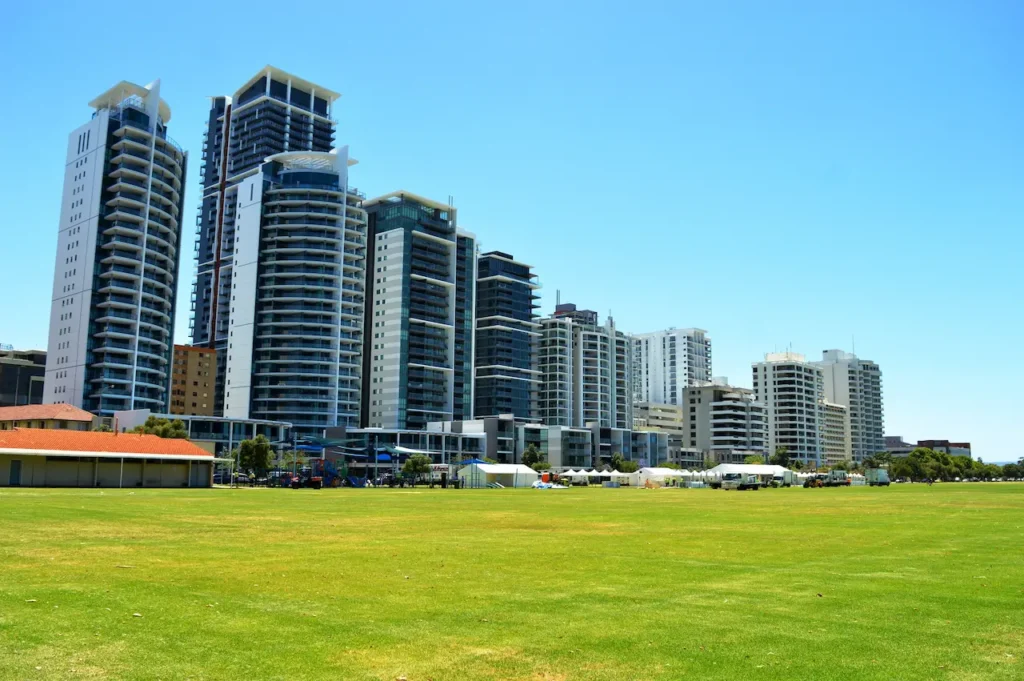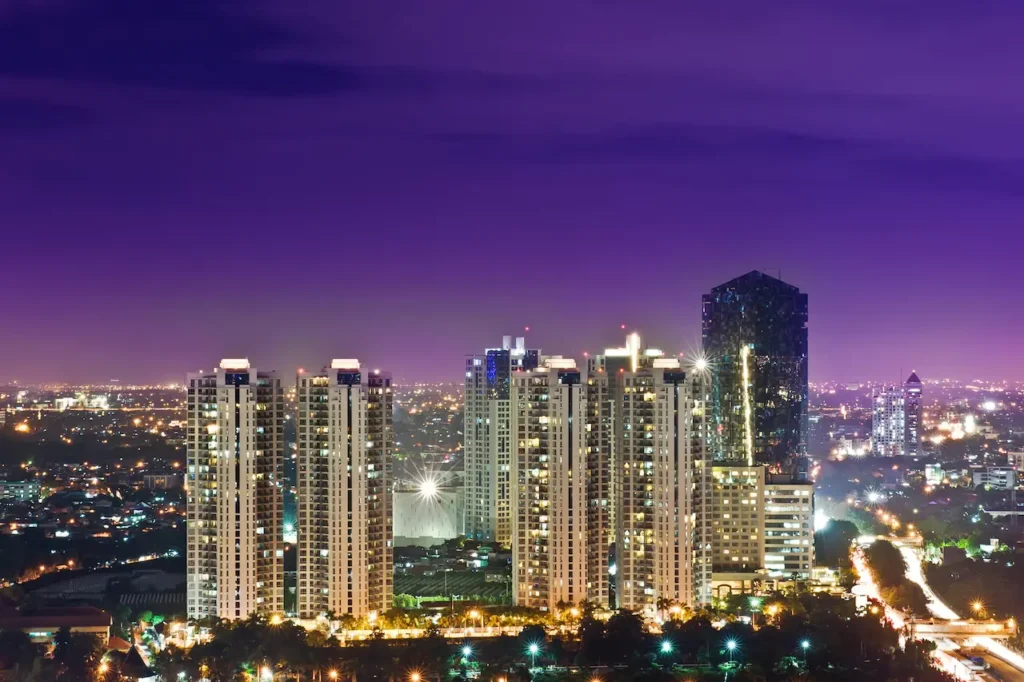At RiskWise Property, our dedicated team is at the forefront of analyzing and reporting on the ever-evolving housing and investment markets in Australia. We understand that these markets can be complex, influenced by a multitude of factors including economic conditions, regulatory changes, and societal trends. Our goal is to equip investors, developers, and stakeholders with the insights necessary to make informed decisions, particularly in light of recent trends surrounding high-rise developments.
The Current Landscape of High-Rise Developments
High-rise real estate development, characterized by the construction of tall buildings in urban settings, has long been considered a vital solution to housing shortages in growing cities. However, the landscape is changing, marked by increasing skepticism from both lenders and buyers regarding high-rise projects. Recent events, particularly high-profile cases like the Mascot and Opal Towers in New South Wales, have cast a long shadow over the viability of these developments. Cracks in these buildings have raised alarms about safety and quality, leading to a decline in demand for high-rise units.

Lender Reluctance: A New Era
The reluctance of lenders to finance high-rise developments reflects a broader trend of risk aversion in the market. According to RiskWise CEO Doron Peleg, even non-bank lenders—who traditionally operate with a less conservative risk assessment—are now exercising caution. “Lenders are proceeding with much more scrutiny,” Peleg states, underscoring a paradigm shift in how financial institutions evaluate high-rise projects.
This caution has significant implications for developers. With lenders hesitant to provide financing, many projects may face delays or even cancellation. This creates a ripple effect, impacting construction timelines, employment, and ultimately, the availability of housing.
The Oversupply Dilemma: A Growing Concern
Our investigations have uncovered another pressing issue: the oversupply of high-rise units in many areas deemed “Danger Zones.” Nationwide, units in the development pipeline represent about 7.6% of current stock, with Sydney and Melbourne showing even higher figures—9.5% and 8.1%, respectively. Despite these significant numbers, actual sales figures tell a different story. Recent data indicates that only 8% of available stock sold in Sydney over the last three months, while Melbourne fared slightly better at 12%.
This disconnect between supply and demand raises questions about the sustainability of high-rise developments in these markets. Developers are left grappling with the implications of an oversaturated market, where potential buyers are increasingly skeptical and lenders are more selective.
The Reputational Damage: Long-Term Consequences
The aftermath of high-profile incidents has resulted in significant reputational damage to the construction industry as a whole. Events like the cladding fire at Neo200 in Melbourne have heightened public concern over safety standards in high-rise buildings. The fallout from these incidents extends beyond just immediate financial implications; they have led to a broader loss of trust in high-rise developments.
Shifts in Investor Preferences
The erosion of confidence in high-rise projects has prompted a shift in investor behavior. Many investors, disillusioned by the risks associated with high-rise units, are now turning to safer, more stable investment options. House-and-land packages have gained popularity as families and investors alike seek more reliable investments, shifting the focus away from high-density living.
This shift in preferences is not merely a short-term reaction; it could signify a long-term structural change in the market. As more investors opt for traditional housing solutions, developers must adapt their strategies to align with this new demand landscape.
Analyzing Market Dynamics and Poor Risk Management
Our research has highlighted a critical issue: many developers are struggling due to poor risk management practices. Those who failed to accurately assess market needs and demands have found themselves in precarious positions.
Case Studies in Poor Management
Some developers, in their haste to capitalize on perceived market opportunities, have overbuilt. This has led to a glut of units, particularly in areas already identified as having high levels of stock. The unfortunate reality is that many of these developments were driven by speculative investment rather than a thorough understanding of local demand. For example, in Brisbane, our case study from 2018 highlighted the oversupply issue, resulting in lower valuations, rising defaults on settlements, and a need for heavy discounting to move stock.
The Impact of Lending Restrictions
The tightening of credit conditions has compounded these challenges. With restrictions on foreign investment, banks increasingly refusing to loan to self-managed super funds, and local investors looking elsewhere, the demand for high-rise units has significantly decreased. This has led to a troubling scenario where developers are left holding unsold inventory and facing mounting financial pressure.

The Benefits and Drawbacks of High-Rise Development
High-rise development is not inherently a flawed concept; it comes with a set of benefits and drawbacks that developers must navigate. Understanding these factors is crucial for making informed investment decisions.
Advantages of High-Rise Development
- Efficient Land Use: High-rise buildings make effective use of limited urban space. In cities grappling with housing shortages, constructing upward can address this issue without expanding into surrounding areas, which can contribute to urban sprawl.
- High-Density Living: Cities have increasingly shifted zoning laws to promote high-density living as a strategy to combat urban sprawl. This trend aligns with sustainable urban development goals and can yield higher returns for developers by maximizing the number of residential or commercial units per plot.
- Urban Appeal: High-rise buildings often attract younger demographics, particularly millennials and Gen-Z renters, who are drawn to the amenities and lifestyle that urban living offers. This demographic shift creates opportunities for developers who can cater to the evolving needs of city residents.
- Mixed-Use Potential: High-rise developments can incorporate a mix of residential, commercial, and recreational spaces, creating vibrant communities. This not only enhances property value but also attracts a diverse range of tenants and buyers.
- Infrastructure Efficiency: High-rise buildings can benefit from existing urban infrastructure, including public transport, utilities, and amenities. This can reduce the overall environmental footprint compared to sprawling developments that require additional infrastructure investment.
Drawbacks to Consider
- High Construction Costs: High-rise buildings require significant upfront investment. The materials needed to build taller structures—such as reinforced steel and concrete—are expensive, and the costs for specialized construction techniques and safety measures can add to the financial burden.
- Regulatory Challenges: The permitting process for high-rise buildings can be notoriously complex. Developers must navigate multiple levels of government oversight, zoning laws, and building codes, which can lead to delays and increased costs.
- Market Risk: Given the longer timelines associated with high-rise projects, developers are more exposed to shifts in market conditions. Economic fluctuations can impact demand, making it essential for developers to conduct thorough market analyses before committing to a project.
- Public Sentiment: High-rise developments can sometimes face opposition from local communities concerned about changes to neighborhood character, increased traffic, or environmental impacts. Developers must engage in community consultation and address concerns proactively to mitigate resistance.
- Maintenance and Management: The operational complexities of managing a high-rise building, including maintenance and tenant relations, can be challenging. Developers need to consider the long-term management of the property and its amenities to ensure ongoing tenant satisfaction.
Common Pain Points for Developers
As our team continues to analyze the high-rise development landscape, several common pain points have emerged that developers must consider to ensure successful project execution.
Financial Risks
The capital-intensive nature of high-rise development necessitates meticulous financial planning. Developers must leverage tools and strategies that enable accurate forecasting and risk assessment. Effective budget forecasting allows for a clearer understanding of potential costs and revenue streams, reducing the likelihood of financial shortfalls.
Project Delays
High-rise construction projects are particularly susceptible to delays, often stemming from a complex regulatory approval process and the need to manage multiple contractors. Delays can significantly affect profitability and timelines, so proactive project management is crucial. Employing technology solutions that provide real-time insights into project timelines can help mitigate these risks.
Regulatory Compliance
The intricate web of regulations surrounding high-rise construction makes it imperative for developers to collaborate closely with local authorities. Engaging in proactive communication with planning boards and regulatory agencies can streamline the approval process and ensure compliance with building codes, reducing the likelihood of costly delays.
Market Fluctuations
Developers must stay attuned to market dynamics that can influence demand for high-rise units. Economic downturns, changes in interest rates, or shifts in demographic preferences can all impact sales. Regularly updating market research and consumer insights is vital to adapting strategies effectively.
Construction Quality
Ensuring high construction quality is critical to avoiding the pitfalls that have plagued recent high-rise projects. Developers need to invest in rigorous quality control processes and work with reputable contractors to mitigate the risk of defects that can harm their reputation and lead to costly remediation efforts.

The Future of High-Rise Development
Despite the challenges currently facing high-rise developments, the trend of urbanization is expected to persist. As populations in cities continue to grow, the demand for efficient, high-density housing will remain significant. Developers who are willing to adapt and innovate will find opportunities within this evolving landscape.
Adapting to Market Needs
Understanding the target audience is paramount for developers aiming to succeed in this competitive market. Conducting thorough market research can help identify trends and align projects with current demand. Developers who can offer innovative solutions tailored to the needs of urban residents will likely find greater success.
The Role of Technology
The integration of technology into the development process is poised to transform the future of high-rise projects. From project management software that enhances efficiency to advanced building materials that improve sustainability, developers have access to a range of tools that can streamline operations and mitigate risks.
- Building Information Modeling (BIM): This technology allows for detailed 3D modeling of buildings, helping developers visualize projects and identify potential issues before construction begins.
- Smart Building Technologies: Incorporating IoT devices can enhance building efficiency, improve energy management, and provide valuable data for future renovations or expansions.
- Data Analytics: Using data analytics tools can help developers understand market trends, consumer behavior, and economic indicators, enabling them to make more informed decisions about their projects.
Emphasizing Sustainability
As public concern for environmental issues grows, developers must prioritize sustainability in their high-rise projects. This includes incorporating energy-efficient designs, sustainable materials, and eco-friendly technologies. Properties that focus on sustainability not only attract environmentally-conscious buyers but also benefit from reduced operational costs over time.
Conclusion: A Path Forward for High-Rise Development
At RiskWise Property, we believe that a nuanced understanding of the housing market, along with a commitment to informed decision-making, is essential for navigating the challenges and opportunities of high-rise development. Our dedicated team is committed to providing accurate, timely information and insights that empower stakeholders to make strategic choices.
As we move forward, developers must adapt to a rapidly changing landscape characterized by shifting investor preferences, regulatory challenges, and market dynamics. By embracing best practices in risk management, leveraging technology, and prioritizing sustainability, stakeholders can position themselves for success in the evolving world of high-rise real estate.
In this context, fostering a culture of transparency and collaboration among developers, lenders, and regulatory bodies will be vital for rebuilding trust and ensuring the long-term sustainability of high-rise projects. By taking a proactive approach to understanding the complexities of the housing market, we can collectively contribute to the growth and sustainability of Australia’s urban landscape.
By focusing on informed strategies and effective risk management, we can help shape the future of high-rise development in a way that benefits all stakeholders, ultimately leading to vibrant, thriving urban communities.